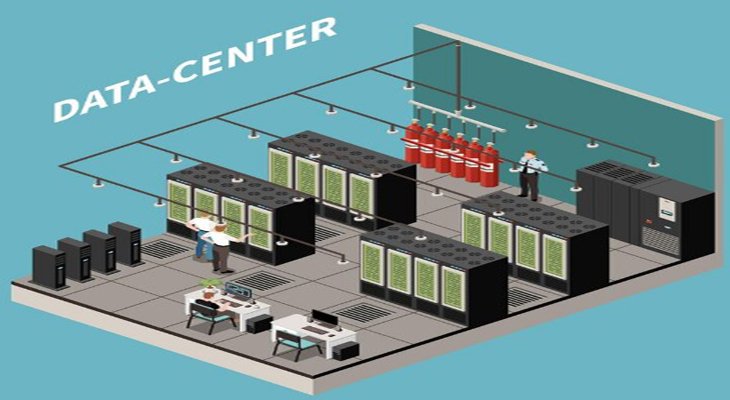
How Netflix Uses Amazon Web Services for Streaming Success?
Once upon a time, Netflix, known today as the colossal streaming giant, faced the herculean task of supporting millions of users binge-watching their favorite shows and movies.
The backbone of their operation wasn’t just their captivating content but also a robust, resilient infrastructure.
This tale weaves through their evolving infrastructure needs, which ultimately led them to embrace the cloud, notably Amazon Web Services (AWS).
The Beginning
In the nascent stages of Netflix, back when it was a DVD rental service mailing out those red envelopes, the infrastructure demands were significantly different. Their operations were heavily reliant on physical logistics, managing DVDs, and ensuring deliveries.
However, as they ventured into the online streaming world, the game changed entirely. The challenge wasn’t just about posting DVDs but streaming vast amounts of data to millions globally without a hitch.
Early Days of Netflix
The journey began in the late 1990s when Netflix emerged not with a bang but a modest start, focusing on DVD rentals.
Initially, their infrastructure was simple, based around a traditional data center setup which managed their inventory, user data, and transaction processing.
But as the whispers of digital transformation grew louder, Netflix faced its first major crossroads: the shift to streaming.
Need for Scalability
This shift wasn’t just a new feature; it was a paradigm shift in how content was delivered. Streaming meant that Netflix had to be capable of delivering high-quality video content on-demand, at scale, and with minimal lag or buffering.
The early 2000s were a testing ground as they began offering streaming content alongside their DVD service. However, the existing infrastructure was ill-equipped to handle the growing strain. Enter the cloud.
The transition to streaming required a scalable, reliable solution that could handle unpredictable spikes in demand, massive data loads, and a global user base.
After much deliberation and testing, Netflix chose Amazon Web Services (AWS) as their ally. AWS offered the elasticity to scale up or down based on demand, a plethora of tools to manage and analyze big data, and the reliability of Amazon’s massive infrastructure.
This strategic move didn’t just address their scalability woes; it revolutionized their operational efficiency, allowing them to focus more on content and less on managing data centers.

AWS Adoption
Decision Factors
The choice to move to AWS was driven by several key factors that aligned with Netflix’s vision for the future. One primary consideration was scalability.
AWS offered an on-demand infrastructure that could instantly scale up during peak viewership times—like when a popular show drops a new season—and scale down during less busy periods, ensuring cost-effectiveness and efficiency.
Another critical factor was reliability. AWS’s diverse array of data centers around the globe meant that Netflix could deliver high-quality streaming experiences with minimal downtime and performance issues.
Additionally, the extensive suite of tools provided by AWS for data analytics, machine learning, and automation would enable Netflix to innovate rapidly, improving their service offerings and tailoring content to user preferences.
Migration Process
The migration of Netflix from their traditional IT infrastructure to AWS was a monumental undertaking that spanned several years. Initially, the move was cautious, starting with smaller, non-critical applications to test the waters.
This phase allowed Netflix to gain familiarity with the cloud environment and its functionalities. Once confidence was built, the migration escalated to more significant parts of their architecture, including customer-facing services.
The final and most critical phase involved transferring high-load systems that handled video streaming and customer data.
Throughout this process, Netflix developed new operational practices to ensure seamless deployment cycles, which included extensive automation and rigorous testing protocols to maintain service continuity and security.
By 2016, Netflix had completed this massive shift, closing down its last data center, thereby operating entirely on AWS.
This strategic move to AWS not only addressed the immediate technical challenges but also provided a scalable model that supports Netflix’s continuous growth and global expansion.
It stands as a robust example of how cloud computing can transform the entertainment industry, making it a case study for many to follow.
AWS Services
Benefits of AWS
Firstly, the scalability offered by AWS allowed Netflix to handle millions of concurrent streams efficiently, a critical capability, especially during peak viewing times.
This scalability ensured that they could maintain a smooth, uninterrupted streaming experience for users, which is paramount in retaining customer satisfaction and reducing churn.
Secondly, AWS’s robust global infrastructure significantly reduced the risk of service disruptions. By distributing their operations across multiple geographically dispersed data centers, Netflix achieved higher availability and fault tolerance.
Additionally, the analytics and machine learning services provided by AWS enabled Netflix to gain insightful data on user preferences and viewing patterns, which informed their content development and recommendation algorithms, enhancing personalization and user engagement.
The move to AWS not only supported Netflix’s technical requirements but also provided strategic benefits such as cost efficiency and innovation facilitation. By paying only for the resources they used, Netflix managed costs more effectively compared to maintaining physical data centers.
Moreover, the continuous evolution of AWS services provided Netflix with access to the latest advancements in cloud computing technology, allowing them to stay ahead in a highly competitive market.
The partnership with AWS became a cornerstone of Netflix’s strategy to redefine the entertainment landscape, highlighting how technology and business needs can align to create a scalable, innovative, and customer-focused ecosystem.

Data Handling
Data Storage and Access
At the core of Netflix’s data handling capabilities through AWS are the robust storage solutions that cater to their extensive needs. Using Amazon Simple Storage Service (S3), Netflix stores billions of data points collected daily from user interactions.
This data includes video streams, user behavior, device information, and application logs. The flexibility and scalability of S3 allow Netflix to easily scale its storage needs without the upfront cost and effort of managing physical servers.
Additionally, the integration of Amazon Elastic Block Store (EBS) provides persistent block storage volumes for use with Amazon EC2 instances, offering high performance for both throughput and transaction-intensive applications crucial for Netflix’s operations.
Big Data Analytics
Leveraging AWS for big data analytics has been a game changer for Netflix. They utilize Amazon Redshift, a fast, scalable data warehouse, to analyze large datasets quickly and efficiently.
This analysis helps Netflix gain actionable insights into customer preferences and viewing patterns, enabling them to tailor their content and recommendations to enhance user engagement.
Furthermore, the deployment of AWS analytics tools like AWS Lambda and Amazon Kinesis allows for real-time data processing. This real-time capability enables Netflix to perform instant analysis of streaming data and adjust their systems dynamically, optimizing the viewing experience based on instantaneous feedback from their global user base.
The integration of AWS’s powerful analytics with Netflix’s operational strategies has not only streamlined their data management processes but also enhanced their ability to make data-driven decisions swiftly.
By continuously analyzing viewer data, Netflix can not only predict future trends but also react promptly to shifts in viewer behavior. This sophisticated use of big data analytics underlines Netflix’s commitment to maintaining its position as a leader in the digital streaming space, providing content that is both compelling and closely aligned with viewer preferences.
Security Measures
AWS Security Features
AWS provides Netflix with a comprehensive array of security features designed to protect its vast digital assets. One of the cornerstones of AWS security is the shared responsibility model, which delineates the security obligations of AWS and Netflix.
AWS takes responsibility for securing the underlying infrastructure, while Netflix secures anything they put on or connect to the cloud. This model is complemented by advanced security tools such as AWS Identity and Access Management (IAM), which allows Netflix to control access to their AWS resources finely.
Furthermore, AWS Shield, a managed Distributed Denial of Service (DDoS) protection service, safeguards Netflix from online attacks, ensuring service availability and reliability.
Netflix also benefits from AWS’s encryption capabilities, which secure data at rest and in transit. The use of AWS Key Management Service (KMS) allows Netflix to manage and control the cryptographic keys used to encrypt their data, providing an added layer of security by ensuring that only authorized users and processes can access sensitive information.
Compliance and Privacy
Data privacy and regulatory compliance are critical aspects of Netflix’s operation, especially as they navigate different jurisdictions with varying data protection laws.
AWS supports Netflix in this complex landscape by offering services that comply with major privacy regulations like the General Data Protection Regulation (GDPR) and standards such as the Payment Card Industry Data Security Standard (PCI DSS).
AWS’s infrastructure is designed to meet the highest compliance standards, providing documentation and features that help Netflix comply with legal and regulatory requirements across the globe.
For instance, AWS provides the ability to keep data in specific regions, which is crucial for compliance with national data sovereignty laws. Additionally, AWS’s logging and monitoring tools, such as AWS CloudTrail and Amazon CloudWatch, allow Netflix to perform forensic analysis if security events occur, aiding compliance with requirements for reporting and auditing.
In embracing AWS’s robust security and compliance offerings, Netflix ensures that their streaming service is not only fast and reliable but also secure and compliant with international data protection standards. This not only minimizes risks but also builds a strong trust relationship with users, critical for maintaining customer loyalty and satisfaction in the competitive streaming industry.

Challenges
Technical Challenges
The integration of Netflix’s vast systems with AWS was an ambitious undertaking fraught with technical challenges. One of the primary issues was the migration of massive amounts of data without interrupting the service, which millions of customers were using simultaneously.
Ensuring data integrity and minimal downtime required meticulous planning and execution. Additionally, Netflix had to re-architect their applications from a monolithic design to a microservices architecture that is better suited for the cloud environment.
This transition involved breaking down complex software into smaller, independently deployable services, a process that was not only time-consuming but also required a shift in the engineering culture and practices.
Another significant technical challenge was optimizing the network performance to handle high traffic and data transfer speeds, essential for delivering high-quality streaming services globally.
The variable latency and bandwidth issues presented obstacles in maintaining a consistent user experience across different regions. Netflix also had to develop new capabilities for disaster recovery and failover mechanisms to ensure high availability and fault tolerance, essential when operating on a global scale.
Ongoing Challenges
Even after a successful migration, Netflix continues to face challenges in leveraging AWS to its fullest potential. One of the ongoing issues is cost management.
The pay-as-you-go model of AWS provides flexibility but requires continuous optimization of resources to manage costs effectively. Netflix has to regularly adjust their usage and manage their resources efficiently to prevent unnecessary expenses, which can be a complex task given the scale of their operations.
Security remains an ongoing challenge as well, despite AWS’s robust security features. As Netflix continues to expand, so does the surface area for potential security threats.
Staying ahead of emerging security risks and protecting user data against increasingly sophisticated attacks is an ongoing concern that requires constant vigilance and innovation in security practices.
Furthermore, as technology evolves, Netflix faces the challenge of keeping up with the latest developments in cloud services and technologies.
This involves training their teams, updating systems, and occasionally, re-evaluating their infrastructure to ensure that it aligns with the best practices and the most advanced technologies available.
These challenges underscore the dynamic nature of Netflix’s relationship with AWS, where continuous improvement and adaptation are crucial. Despite these obstacles, the strategic decision to leverage AWS continues to provide Netflix with the tools necessary to maintain its leadership in the global streaming market.
The Future
Evolving Needs
In the future, Netflix’s technology needs will likely become even more complex as they push the boundaries of what’s possible in digital content delivery.
One of the primary areas of focus will be enhancing the personalization of viewer experiences through more sophisticated machine learning algorithms, which will require even more robust computational power and advanced data analytics capabilities.
AWS can provide the necessary infrastructure to support these advanced technologies, allowing Netflix to refine their content recommendations and improve user engagement.
Another foreseeable need is the enhancement of global content delivery. As Netflix expands into new regions, they will need to ensure that their service is as seamless in new markets as it is in established ones.
This may involve deploying more regional data centers through AWS, enhancing local caching strategies, and improving latency and load times to deliver a consistently high-quality experience worldwide.
Potential Changes
As for potential changes in Netflix’s use of AWS, one possibility includes diversifying their cloud strategy to incorporate a multi-cloud approach.
While AWS currently provides a comprehensive set of services that cater to Netflix’s needs, the future might see them integrating other cloud services to enhance their resilience and avoid dependency on a single provider.
This could involve using different cloud services for various aspects of their operations, such as Google Cloud for data analytics or Microsoft Azure for artificial intelligence capabilities.
Additionally, Netflix might further embrace serverless architectures to optimize their operational efficiency and reduce costs. AWS’s serverless offerings, such as AWS Lambda, could be increasingly utilized to run code without provisioning or managing servers, allowing Netflix to handle applications and services dynamically.
Lastly, as concerns around data privacy and security continue to grow, Netflix may need to implement more rigorous data governance and security measures.
This could involve using more of AWS’s security tools and features to ensure compliance with global data protection regulations and to safeguard against breaches and other cyber threats.
Looking ahead, the relationship between Netflix and AWS is likely to be characterized by mutual evolution. As Netflix explores new horizons in content delivery, AWS will continue to play a critical role in providing the scalable, secure, and innovative cloud solutions required to turn these ambitions into reality.
This partnership will not only shape the future of streaming but also influence broader trends in technology and entertainment.
Conclusion
In conclusion, Netflix’s use of Amazon Web Services (AWS) has been a pivotal element in its evolution from a DVD rental service to a global streaming powerhouse.
AWS has provided Netflix with the scalable infrastructure necessary to support massive data handling, sophisticated analytics, and global content delivery.
The partnership has enabled Netflix to focus on innovation and content creation by leveraging AWS’s robust cloud capabilities.
As Netflix continues to grow and adapt to changing technological landscapes and viewer demands, AWS remains an indispensable ally.
This relationship highlights the transformative impact of cloud computing on the media and entertainment industry, setting a benchmark for others to follow.
Frequently Asked Questions
Does Netflix use Amazon Web Services?
Yes, Netflix extensively uses Amazon Web Services (AWS) for its cloud computing needs. AWS provides the backend infrastructure that supports Netflix’s streaming service globally.
Why did Netflix choose AWS for its cloud services?
Netflix chose AWS due to its scalability, reliability, and extensive global infrastructure. AWS enables Netflix to efficiently handle large volumes of data and traffic, ensuring a smooth streaming experience for millions of users worldwide.
What AWS services does Netflix use?
Netflix utilizes a variety of AWS services, including Amazon EC2, Amazon S3, Amazon CloudFront, and Amazon Redshift. These services help Netflix manage and deliver content effectively, analyze user data, and ensure high availability and performance.
How does AWS support Netflix’s global operations?
AWS supports Netflix’s global operations by providing a robust, scalable cloud infrastructure that allows for the deployment of applications and content delivery in multiple geographical locations. This ensures low latency and high performance for users across the globe.
Are there security benefits for Netflix using AWS?
Yes, using AWS offers significant security benefits for Netflix, including comprehensive data protection, encryption, and compliance features. AWS’s security model and tools help Netflix safeguard sensitive data and protect against threats.
Has the use of AWS changed how Netflix operates?
Yes, migrating to AWS has transformed how Netflix operates, allowing them to abandon traditional data centers, reduce operational costs, and focus more on innovation and improving customer experience rather than infrastructure management.

Muhammad Moiz, a Dartmouth College Computer Science major, is an experienced and respected figure in the fields of digital marketing and programming. Moiz excels in demystifying complex technical topics, making him a valuable resource for both seasoned professionals and those new to the tech world.

